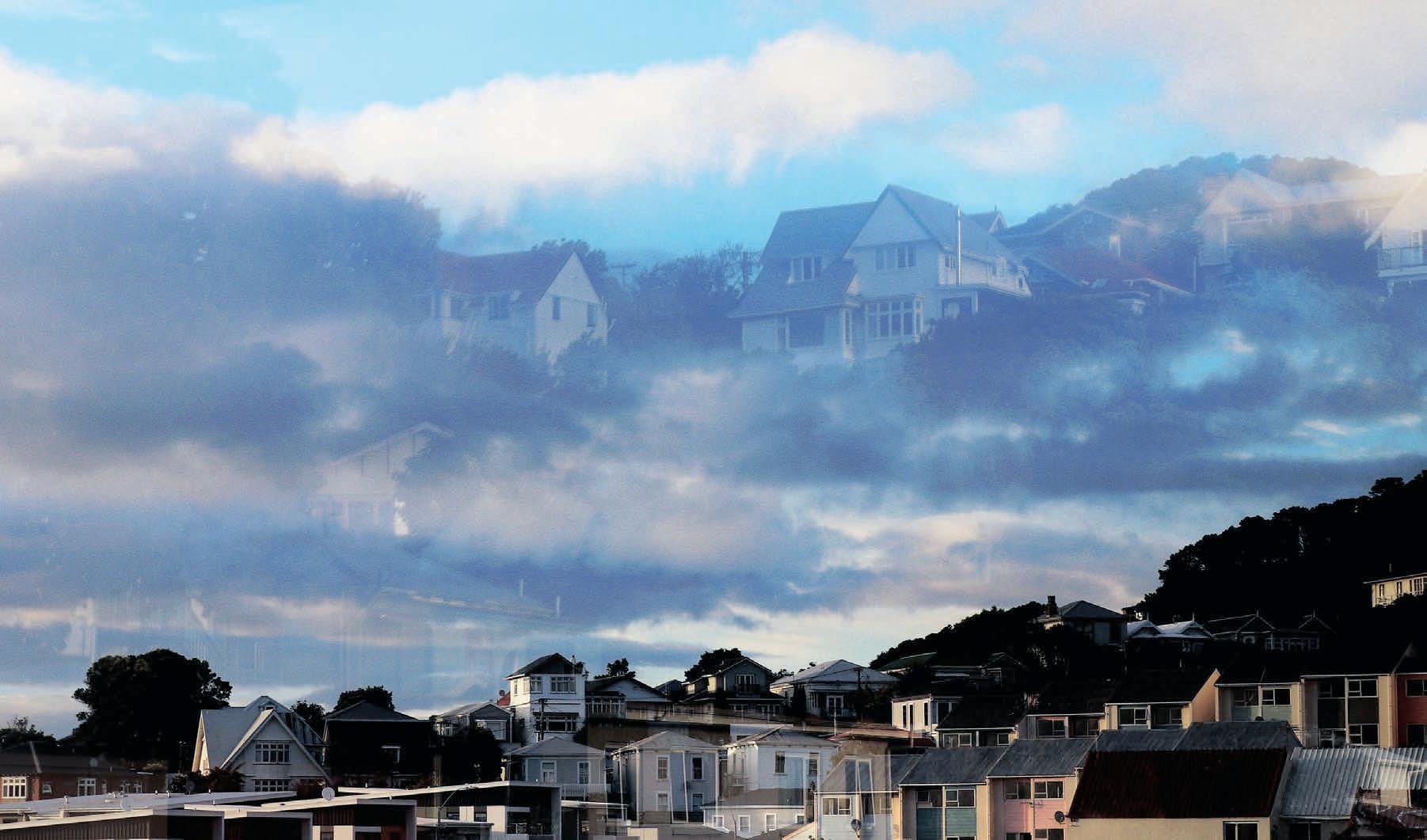
4 minute read
How did we get here? A housing market timeline
HOW DID WE GET HERE?
T imeline of a ‘housing crisis’
Advertisement
Homes in the Wellington suburb of Mt Cook reflected in a window against the sky above. The average property value in the capital crossed the $1m mark in the last 12
months. Photo / Getty Images
Housing affordability in New Zealand has steadily worsened over the last 10 years. KELVIN DAVIDSON looks at the factors that have driven the market to this point.
The primary mega-trend driving the housing market over the years has been the long decline in inflationary pressures, which has allowed interest rates to drop significantly, increasing the incentive to borrow but also reducing the incentive to save. Amplifying this was the GFC in 2008 and subsequent rate cuts and programmes of quantitative easing overseas.
We’ve also had the shift towards more earners per household – possibly driven by other factors (and in turn this itself has contributed to rises in house prices) - but perhaps a circular symptom of higher house prices themselves. People have had to work more to be able to afford a property.
2 0 2 011 11
Three years after the GFC and the housing market is still fairly quiet, with sales and prices subdued.
Affordability is OK but first home buyers are not especially active, while net migration is negative and dwelling consents are low. This was a period when construction confidence was shaken, which left a lasting legacy – a shortage of houses that we’re still dealing with now.
2 0 1 2 2 0 1 2
The market begins to heat up a li le, with migration less negative and mortgage rates going down. Investors are still a solid presence in the market and dwelling consents are off the floor, but not by much.
2 013 2 0 13
A “milestone” year for the market: net migration turns positive, workforce participation is on the rise, and sales and prices are accelerating, even though mortgage rates have also risen.
Investors are still active but first home buyers are still relatively quiet, with the number of years needed for many people to save for a 20 per cent deposit now above seven.
Dwelling consents are rising, but the legacy of the GFC shake-out is still there and the shortages of stock are growing. 2013 is also the year the Reserve Bank introduces loanto-value ratio (LVR) restrictions, which limits the amount of lowdeposit lending (less the 20 per cent deposit) to 10 per cent.
DEPOSIT CLIMB
The chart shows the change in the number of years it takes to save for a 20% deposit, based on the average household income and averge property value for each quarter since 2011, assuming 15% of income can be saved each year.
Q1, 2011 Q2, 2021
11
10 Years
10.6 years
9
8
7
6
2 0 1 4 2 0 1 4
Net migration ticks up significantly, but mortgage rates edge higher too, while both sales volumes and price growth cool.
Investors remain active, but the LVR restrictions hit first home buyers hard.
The number of dwelling consents improve but are still fairly subdued by past standards.
2 0 1 5 2 0 1 5
A boom year for the housing market: sales are strong and price growth accelerates into double digits, while mortgage rates are cut, net migration hits new heights and workforce participation is above 69 per cent.
First home buyers come back a li le but the number of years needed to save for a deposit ticks above eight. Investors are still a strong presence in the market.
The shortage of houses is ge ing worse as dwelling consents just tick along.
National introduces the Brightline test, which imposes a tax on the sale of residential properties used for investment purposes within two years of purchase. The exception is if the house is a person’s main home.
The Reserve Bank changes the LVR rules: Auckland investors need a 30 per cent deposit while the deposit requirement jumps from 10 per cent to 15 per cent for everyone else. rising quickly.
Migration is up and dwelling consents are rising but still not enough. Mortgage rates are stable but more people are coming into the workforce.
First home buyers are subdued - the number of years needed to save for a deposit is just over nine – while investor activity remains strong.
The Reserve Bank changes the LVRs again – a 40 per cent deposit is required by investors, and 20 per cent for others.
2 0 1 7 2 0 1 7
A turning point is reached, with investors pulling back and overall sales and prices slowing.
The number of years needed to save for a deposit improves and first home buyers command a bigger share of the market.
Mortgage rates are stable and migration eases but it is still high enough to put pressure on housing stock.
2 0 1 8 2 0 1 8
A holding year for the market, with most indicators pre y stable.
The Reserve Bank makes further tweaks to the LVR restrictions - the deposit requirement for investors drops from 40 per cent to 35 per cent while for owner-occupiers it rises to 15 per cent. The new Coalition Government extends the Brightline test to five years








